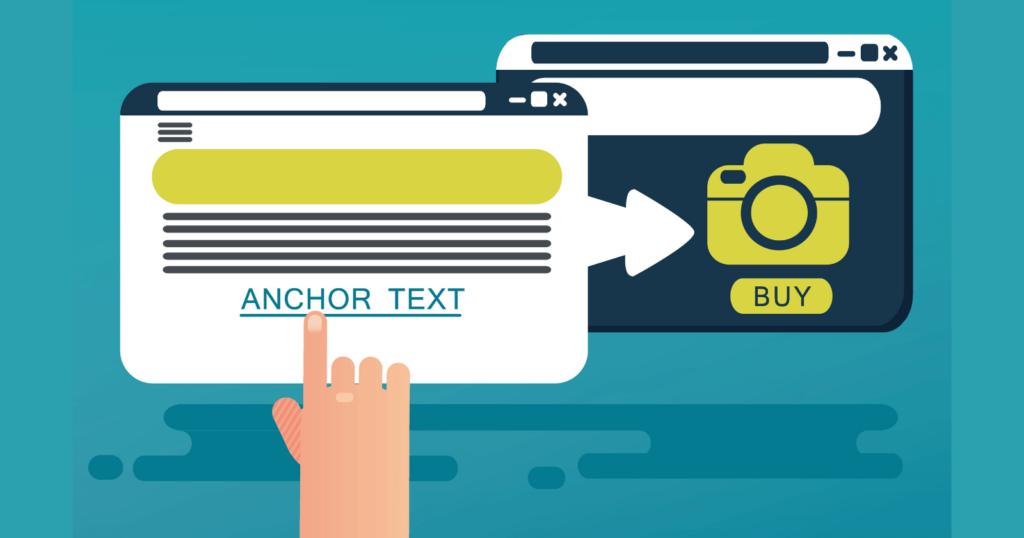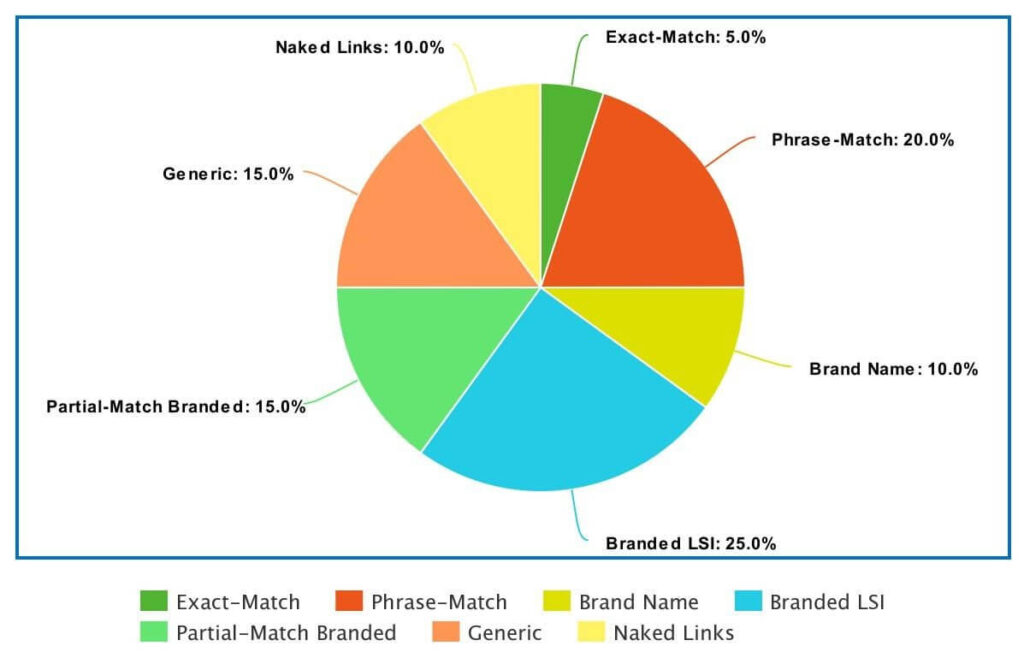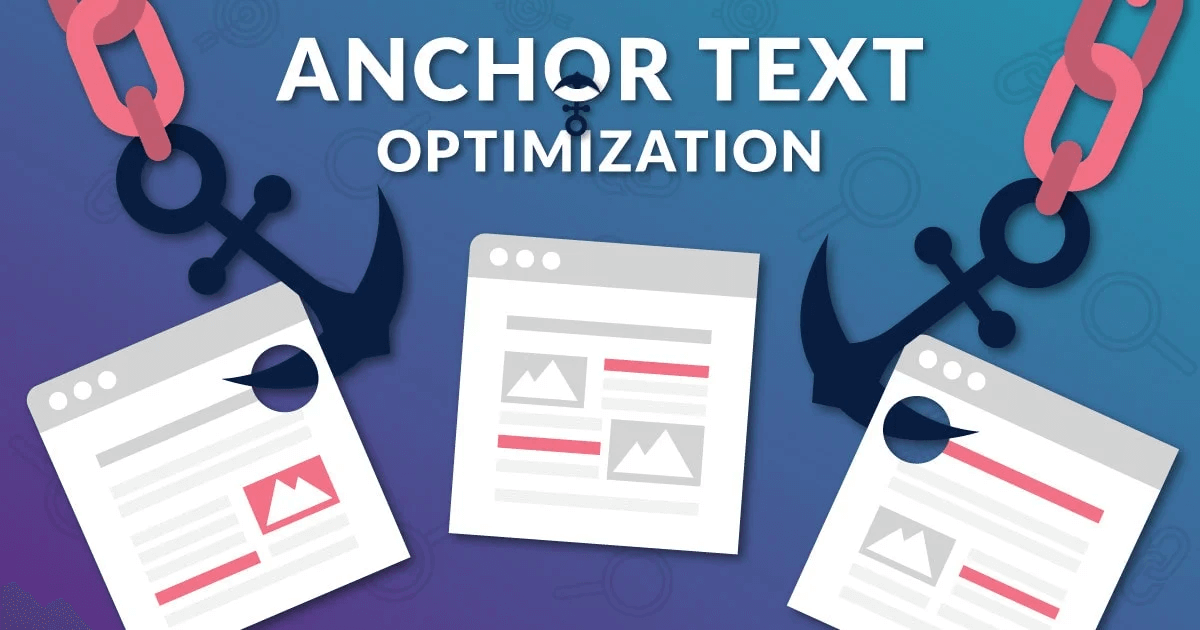Anchor text is a concept that is no longer new to SEOs. But the use of Anchor text to achieve the most optimal effect is not something everyone knows. By understanding anchor text and exploring its potential, you can enhance your online presence and attract organic traffic. In this article, we will share with you the importance of anchor text, its types, and best practises to optimise it effectively.
What is Anchor Text?

Anchor text (also known as a text link, link label, or link title) is a piece of text used to attach a link (URL) to it. There, you can click and go to the page with the attached link. Usually, anchor-text will be displayed differently from other text, in bold or blue and underlined.
Effective use of anchor text is essential for both search engine optimization (SEO) and user experience, as it helps search engines and users understand the content and purpose of a webpage before visiting it.
Why Is It Important?

Anchor text is one of the elements that make up the website’s backlink system, so it is just as important as other types of backlinks. When using Anchor-text with scientific density, it will have many SEO effects, such as:
- Help compete better than competitors and increase our ability to rank on SEO and SERPs.
- Help your website increase ranking authority on Google if the text of the link insert matches the redirected content. Since then, your ranking has also increased significantly.
- Help users find relevant content quickly and accurately.
- Increase the ability to convert value as well as keep users on your website longer.
All these benefits help increase your website’s rankings. Thanks to anchor text, users will stay on your website longer and sympathetically redirect to another URL from the anchor text you provide, thereby limiting the bounce rate. Combined with engaging CTAs and quality content, you’ll be able to make the customer’s shopping process more efficient.
However, in April 2012, Google implemented the Penguin algorithm for the first time, causing many websites to be penalized for inappropriate use of anchortext.
Therefore, in order for your website to achieve high rankings on search engines, you need to use rich and natural anchor text to meet the user’s expectations.
Different Types of Anchor Text

To understand how to create the most natural anchor text, you need to know the following 9 basic types of anchor-text:
1. Branded anchors
Using branded anchor text is the safest practice. Start with the first links pointing to your landing page with branded anchor text.
Brand name anchortext is even more secure if your domain name is also your brand name, eg: Shineapps, Shineapps.co. If your domain name is the correct keyword, you need to be careful and have plans to avoid manipulation.
2. Naked link anchors
A naked URL anchor text is simply the URL of the target page, without any specific keywords or phrases. For example, https://shineapps.co/ serves as the anchor text. While naked URLs are concise and straightforward, they don’t provide any contextual information about the target page’s content.
3. Generic anchors
This is the most common type of anchor text that everyone can see many times when reading articles. This form will exist under the following types: “See More”, “Click Here”, or “Learn More”.
Anchor Text form as a call, promoting user behavior to access the link. This action increases traffic to the website, which is beneficial for SEO. This is also one of the most effective ways to interact with users.
4. No anchor trick
This is a little trick you can use, in fact, many SEO experts as well as large websites often use it when optimizing content on the web. The simplest way to do the no-anchor trick is to attach the anchor link to the image in the article.
5. Image anchors
Instead of placing a regular image, you can insert a link into the image, and when the user clicks on the image, it will be redirected to the landing page. Google will use the text contained in the image’s Alt attribute as the anchor text.
6. Brand and Keyword anchor
It can be said that this is a particularly effective method from many perspectives. Even many SEO experts use it to transform the ranking process of keywords with a high competition index.
Adding keywords in combination with your brand name will help you promote communication. Users identify faster: what your brand is about. For example, if the target page is the homepage of a company called “Shopify Apps”, the link text could be “Shopify Apps”.
7. Keyword variations
Providing more information to users around your keywords is a smart way to do it. When we take it seriously, it will definitely bring high results.
For example, if your main keyword is “SEO”, then the variant keyword looks like this: “What is SEO?”, “Benefits of SEO”, “How to SEO a website effectively”.
8. Partial-Match
This partial match anchor text will contain your keyword, but not exactly. For example, an anchor text partial match for the target keyword “laptop” would be: “laptop under $1000”, cheap laptop.
Using “Partially matched anchor text” is a natural way to link to another website.
9. Exact Match anchor
The Exact Match anchor is actually your keyword. This is a common form of anchor text and has a great influence on boosting keyword rankings. For instance, if the linked page is about “best laptops,” the anchor text might be “best laptops.” While using exact match link text can provide a clear indication to search engines, overdoing it can result in a Google penalty.
How To Optimize Anchor Text

Using Anchor text effectively is not simple, choosing which type of Anchor text and what percentage of SEO landing pages to use is quite complicated. Here are 5 ways to use and optimize the correct and best anchor-text that many SEOers regularly use:
Use relevant anchor text
Google has a Penguin algorithm that checks link quality. Therefore, placing anchor text related to the article content is something to pay attention to.
The higher the anchors that match the target keyword, the better the user experience when they are directed to the page that provides the information they want to know. This scores well in the eyes of Google and is prioritised when it comes to search rankings.
Don’t link to malicious sites
Because Google does crawl and review the pages you link to, if the linked page contains false, discredited, or spam information, you may be penalized. This affects not only the quality of your website but also the effectiveness of SEO.
Allocation of Anchor Texts Cleverly
Placing anchor text is not difficult, but it is not easy either. Place anchor text to match the content in question, be valuable to readers, and have a natural density that is not too dense. Avoid placing multiple anchor texts with the same keyword if you do not want to be warned by the Google Algorithm.
Take advantage of image ALT
The image alt tag helps the Google bot understand the meaning that the image wants to refer to. The alt tag should be described as naturally as possible, avoiding the use of popular keywords, because it can be read by Google quickly. The best way is to use the main keyword and write it into the most natural sentence.
Various Anchor texts
Anchor text does not have to be the same, as this will be considered keyword stuffing that can be detected by the Google algorithm. A variety of anchor texts will help optimize SEO properly by converting target keywords into related keywords.
Appropriate Anchor Text Density

Google has begun to take a closer look at keywords in anchor text after updating its Penguin algorithm. If there are too many links on a website that contain the same anchor text, Google will start to get suspicious and take it as a sign of unnatural links.
Therefore, you need to consider the density of each type of Anchor text so that it is reasonable. Normally, the density of anchor text can be distributed as follows:
- Brand anchor text: 35% – 40%
- Naked link anchor: 10% – 15%
- Image anchors: about 10%
- Generic anchor text: 10% – 15%
- Partial match anchor: 12% – 15%
- Exact match anchor text: 1% – 5%
- No anchor trick: about 5%
Wrapping Up
Overall, it may be said that anchor text plays a significant role in search engine optimization (SEO). Anchor text optimization can significantly boost visibility, organic traffic, and overall page rankings. However, it is critical to approach anchor text with prudence and to follow best practices. Hope these shares will be useful to you, helping you to be more successful on your SEO path.




